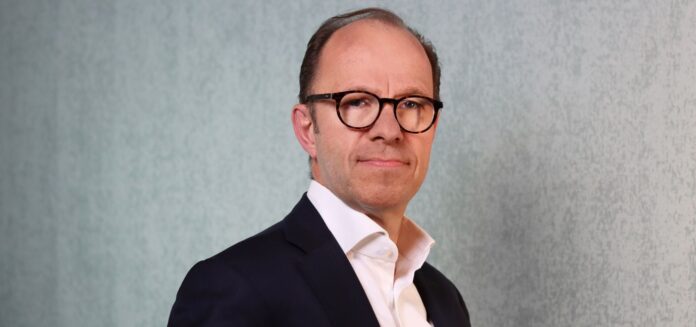Steven DeVries, head of European wholesale distribution at LGIM, tells Piyasi Mitra about the firm’s strategies in active and passive ETFs, technological advancements and expansion plans in the European market.
How does LGIM adjust its active fixed-income portfolios in response to changing interest rates to manage performance and risk?
Anticipating a hard landing, LGIM is cautiously positioned in its portfolios. The firm has upgraded the quality of its credit portfolios, underweight in non-financials and overweight in financials. LGIM is observing a growing demand for fixed-income products – particularly the active side.
What innovative strategies are firms in the industry employing to tap into disruptive technology and meet the demands of European investors?
This marks a thrilling era for technology. The broadening of possibilities not only applies to internal processes such as portfolio management, trade placement and interactions with clients by LGIM’s distribution teams but also presents numerous external opportunities for investment. I believe AI tools will make the lives of financial experts easier and allow sales professionals to work more efficiently by automating painful, manual procedures and enabling them to engage with clients better. The same applies to information shared across compliance processes, leading to better client understanding and servicing. People with less positive intentions with technology – such as hackers and cybercriminals – pose a threat to AI and other technologies.
Recognising cybersecurity as an important issue, LGIM was one of the first asset managers to launch a cybersecurity fund in 2015 and has expanded the range. Hydrogen has also emerged as a vital source of alternative energy. LGIM launched Europe’s first hydrogen ETF in 2021. Before launching a thematic fund, fund managers should ensure that it ticks key boxes such as economic value in the theme, enough liquidity, sufficient market cap in investor companies and a long-term higher growth trend. Past this stage, LGIM looks for experts in the field to harness their intellectual capital, which is pivotal to building those ETFs.
ETFs can be active – just that they are often not managed actively. For instance, LGIM collaborates with partners to create a portfolio of companies related to its investment themes. After this, LGIM chooses stocks from this portfolio based on liquidity, value and the stock ratio in the portfolio. The results are encouraging when you combine an active build of products with buy-and-hold, rule-based management. It’s not either active or passive ETFs – they can coexist peacefully.
How are multi-factor ETFs meeting the evolving needs of European investors?
ETFs are the fastest-growing asset class in Europe, driven by their cost-effectiveness, liquidity and transparency. With a growing emphasis on retirement investing, there is a rising demand for ETFs, as evidenced by their increasing popularity in countries like Germany. Multi-factor investing is also gaining popularity for its diversification benefits. When it is difficult to identify the factor that can help you outperform the markets or achieve your financial goals, multi-factor investing offers a good way of diversifying exposure. Recently, LGIM teamed up with German asset manager, Gerd Kommer, to build a global equity portfolio based on multi-factor investing. The process involves selecting factors such as value and market cap and subsequently using them to construct a portfolio employing a buy-and-hold approach. LGIM has also observed a strong appetite for such products, particularly for end investors seeking retirement savings or a diversified portfolio.
What are the advantages of combining active and passive products for diversification in the current industry landscape?
There is a grey area between active and passive – one could build the portfolio actively and manage it passively or systematically. One could opt for a satellite approach where one copies an index or a benchmark in a corporate portfolio and manages it passively. One could have a more active core and work with thematic ETFs or index products, resulting in a flexible portfolio that complements its components. While passive ETF products provide a cost advantage, some active funds with exceptional track records and effective management may justify the additional fees.
What are your key strategies for 2024 in response to evolving investor demands?
LGIM’s wholesale business in Europe commenced its German operation in 2018. Five years later, it’s active in Germany, Austria, Italy and Switzerland and expansion plans in Spain and the Benelux (Belgium, Netherlands and Luxembourg) regions are underway. LGIM will continue focusing on LGIM’s ETFs and then diversify into active fixed income. LGIM also plans to invest heavily in modernising its infrastructure to manage its platforms, factsheets and registrations more effectively. Moving on, LGIM recently launched Indian bonds amid the announcement of India’s inclusion in JP Morgan’s Government Bond Index-Emerging Markets in 2024, giving LGIM a first-mover advantage. The firm plans to offer such building blocks to its clients, along with global yields, corporate bonds and emerging market debts.
© 2023 funds europe





